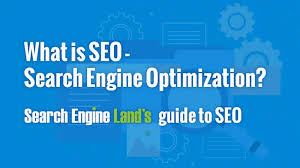SEO vs SEM: Understanding the Difference
When it comes to digital marketing, two terms that often come up are SEO (Search Engine Optimization) and SEM (Search Engine Marketing). While they may sound similar, there are distinct differences between the two strategies. In this article, we will explore what sets SEO and SEM apart and how they can work together to drive online success.
What is SEO?
SEO focuses on optimizing a website’s visibility in organic search engine results. It involves various techniques and practices aimed at improving a website’s rankings on search engine results pages (SERPs). The goal of SEO is to increase organic traffic by ensuring that a website appears prominently when users search for relevant keywords or phrases.
SEO involves both on-page and off-page optimization. On-page optimization includes optimizing website content, meta tags, headings, URLs, and internal linking. Off-page optimization focuses on building high-quality backlinks from reputable websites, social media engagement, and online reputation management.
What is SEM?
SEM refers to paid advertising campaigns that aim to increase a website’s visibility in search engine results. It involves running paid ads on search engines like Google or Bing through platforms like Google Ads or Bing Ads. Unlike SEO, which focuses on organic rankings, SEM relies on paid placements.
The most common form of SEM is pay-per-click (PPC) advertising where advertisers bid for ad placement in search engine results based on relevant keywords. Advertisers only pay when their ads are clicked by users. SEM also includes other forms of paid advertising such as display advertising, remarketing campaigns, and shopping ads.
The Relationship Between SEO and SEM
While SEO and SEM are distinct strategies, they are not mutually exclusive. In fact, they can complement each other and work together to maximize online visibility and drive targeted traffic.
SEO and SEM can be seen as two sides of the same coin. SEO focuses on long-term organic growth, whereas SEM provides immediate visibility through paid advertising. By combining the two, businesses can achieve a comprehensive search engine marketing strategy.
For example, while waiting for SEO efforts to yield results, businesses can leverage SEM to generate immediate traffic and leads. On the other hand, SEO can help reduce reliance on paid advertising in the long run by improving organic rankings and driving sustainable organic traffic.
Choosing the Right Strategy
The choice between SEO and SEM depends on various factors such as budget, goals, timeline, competition, and target audience. It’s important to assess your unique business needs before deciding which strategy to prioritize.
If you’re looking for long-term growth and have the resources to invest in optimizing your website for organic search results, then SEO should be a key focus. However, if you’re aiming for immediate visibility or have specific promotional campaigns or product launches, SEM can provide quick results.
Conclusion
In summary, while SEO and SEM are distinct strategies with different approaches, they both play crucial roles in driving online success. By understanding their differences and leveraging their strengths effectively, businesses can enhance their online presence, increase visibility in search engine results pages (SERPs), attract targeted traffic, and ultimately achieve their digital marketing goals.
Unveiling Online Marketing Strategies: Understanding the Nuances and Impact of SEO vs SEM for Your Business
- What is the difference between SEO and SEM?
- Which strategy, SEO or SEM, is better for my business?
- How long does it take to see results from SEO and SEM?
- Do I need to use both SEO and SEM for my website?
- What are the costs associated with SEO and SEM?
What is the difference between SEO and SEM?
SEO and SEM are two essential components of digital marketing, but they serve different purposes. SEO, or Search Engine Optimization, focuses on improving a website’s visibility in organic search results. It involves optimizing various aspects of a website to rank higher on search engine results pages (SERPs) and attract organic traffic. On the other hand, SEM, or Search Engine Marketing, involves paid advertising campaigns to increase a website’s visibility in search engine results. It includes running paid ads through platforms like Google Ads or Bing Ads. While SEO aims for long-term organic growth, SEM provides immediate visibility through paid placements. Understanding the difference between SEO and SEM is crucial for businesses to develop an effective online marketing strategy that combines both approaches to maximize their online presence and drive targeted traffic.
Which strategy, SEO or SEM, is better for my business?
Determining whether SEO or SEM is better for your business depends on various factors such as your goals, budget, timeline, competition, and target audience. SEO focuses on long-term organic growth and can help improve your website’s visibility in search engine results over time. On the other hand, SEM provides immediate visibility through paid advertising and can generate quick results. It’s important to assess your unique business needs and consider both strategies’ strengths before deciding which one to prioritize. Ultimately, a combination of SEO and SEM can often yield the best results, allowing you to achieve comprehensive search engine marketing and maximize online success.
How long does it take to see results from SEO and SEM?
The timeline for seeing results from SEO and SEM can vary depending on several factors. With SEO, it generally takes time to see significant improvements in organic rankings and traffic. It can take anywhere from a few months to a year or more, depending on the competitiveness of the industry, the current state of the website, and the effectiveness of the SEO strategy implemented. On the other hand, SEM can provide immediate results as soon as paid campaigns are launched. Within hours or days, businesses can start driving targeted traffic to their website. However, it’s important to note that both SEO and SEM require ongoing efforts and continuous optimization to maintain and improve results over time.
Do I need to use both SEO and SEM for my website?
The decision to use both SEO and SEM for your website depends on your specific goals, budget, and timeline. While SEO focuses on long-term organic growth and improving your website’s visibility in search engine results, SEM offers immediate visibility through paid advertising. If you have the resources and are looking for comprehensive search engine marketing, combining both strategies can be beneficial. However, if you have limited resources or specific short-term promotional campaigns, you may choose to prioritize one over the other. It’s important to assess your unique business needs and consider factors such as competition and target audience before deciding on the best approach for your website.
What are the costs associated with SEO and SEM?
The costs associated with SEO and SEM can vary depending on several factors. In terms of SEO, the cost can depend on the complexity of your website, the competitiveness of your industry, and the level of optimization required. SEO costs may include expenses for keyword research, content creation, technical improvements, and ongoing monitoring and maintenance. On the other hand, SEM costs are typically based on a pay-per-click (PPC) model, where you pay for each click on your ads. The cost per click can vary depending on factors such as keyword competitiveness and ad quality. It’s important to allocate a budget that aligns with your business goals and to regularly monitor and adjust your strategies to ensure optimal results within your budget constraints.




